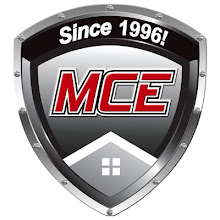Hail Formation by Mastercraft Exteriors(via weatherunderground.com) |
Hail Formation
Wet Growth
A tiny ice crystal will be the nucleus of the hail stone. In wet growth, supercooled water droplets collide with and spreads across the ice nucleus. Since this process is relatively slow (slower than the dry growth process) it results in a layer of clear ice.Dry Growth
Unlike wet growth, the supercooled water meets the ice nucleus and immediately freezes. Because this process is so fast, everything within the supercooled droplet, including small air bubbles, freezes into the layer, which gives it a cloudy look.Rain and hail is what creates the "bounded" portion of the bounded weak echo region (BWER) on radar. The weak echo region is created by a strong updraft, which also helps the hail to grow.
- 1. Hail forms and is carried upward through the storm by the updraft and held above the freezing line
2. The hail stone collides with supercooled droplets and grows in size
3. When the hail becomes too large and heavy to be supported by the updraft, it falls to the ground
Hail has done major damage to St Louis, MO Homes
Several areas like St Louis, MO, Southern IL, Kansas, Minnesota, and parts of Ohio all were damaged by the recent storms. What does this mean when hail hits your home? Hail can make very noticeable damage to cars, windows, siding, etc. But when it comes to your roof, you will need a professional to look at the damage. Once a shingle is compromised, the shingle will not protect your home like it should. The granules will be worn off causing major interior damage if left alone.- Look for visible water damage inside your home.
- Look for damage to your roof's shingles that may compromise the effective life of your roof.
- If necessary, contact your insurance agent and file a claim.
- Consult a local roofing contractor trained in Roof Hail Damage to represent your interests.

No comments:
Post a Comment